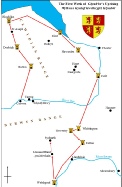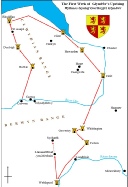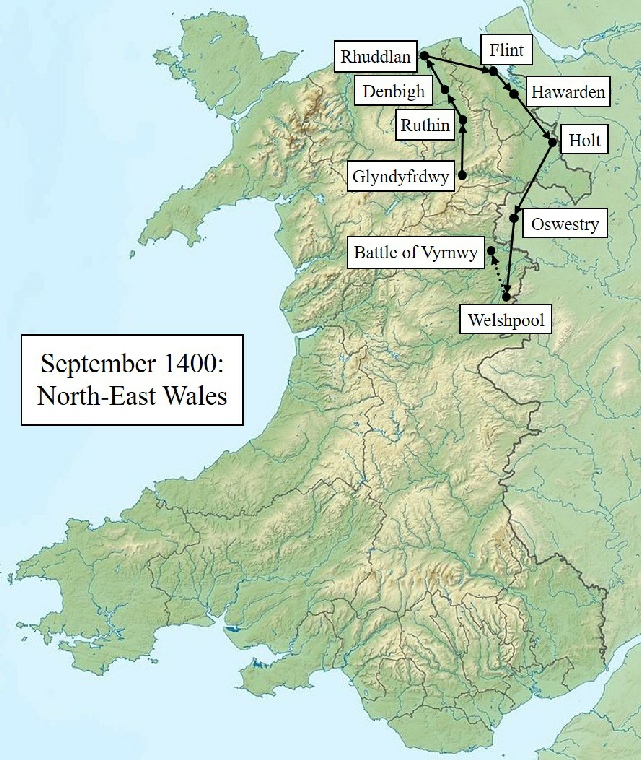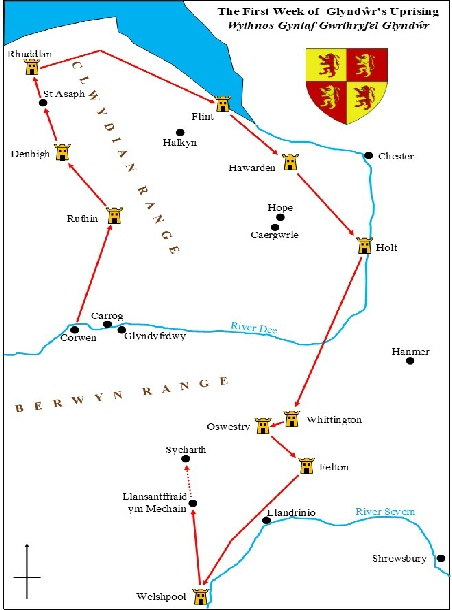The ‘Gl yndŵr Rising’ began on September 16th, 1400 when Owain addressed a large gathering of family and friends at Glyndyfrdwy in the Dee valley. He was hailed as the ‘Mab Darogan’ by his followers - a man who would lead Wales in an uprising against its oppressors. To his English adversaries, however, he was an agitator who was part of a growing rebellion against their rule.
yndŵr Rising’ began on September 16th, 1400 when Owain addressed a large gathering of family and friends at Glyndyfrdwy in the Dee valley. He was hailed as the ‘Mab Darogan’ by his followers - a man who would lead Wales in an uprising against its oppressors. To his English adversaries, however, he was an agitator who was part of a growing rebellion against their rule.
Two days later, Glyndŵr led a surprise attack on Ruthin supported by a force of around 250 men, where the town was looted and burned but the castle resisted. It is often cited that a land dispute between Owain and his neighbour Reginald de Grey, the lord of Ruthin, was the trigger for this attack and therefore for the Uprising.
After attacking Ruthin, Glyndŵr’s forces moved northwards and attacked Denbigh. Again, the town was burned and the castle attacked but not taken. This was repeated in other English-held towns in the area and, by September 21st, Rhuddlan, Flint, Hawarden and Holt had also been attacked.
Moving further south, Whittington, Oswestry and Felton suffered the same fate before Welshpool was attacked on September 23rd. The Battle of Vyrnwy apparently took place on the following day, when Owain’s men were intercepted and scattered by an English force from Shrewsbury led by Hugh Burnell.
This signalled the end of the first week of the Uprising, after which pardons were offered to all of the people involved in the unrest - except for Glyndŵr and his cousins, Gwilym and Rhys ap Tudur.

North-East Wales
1400 Campaign


